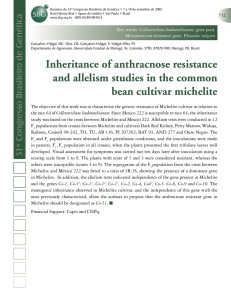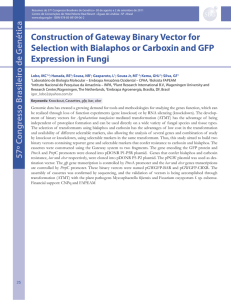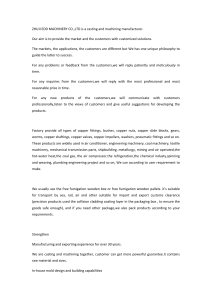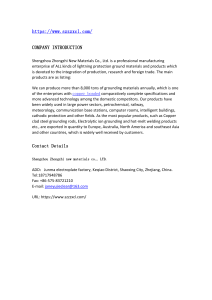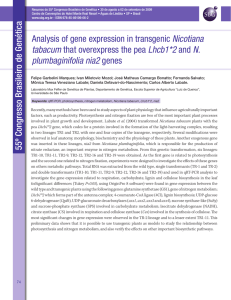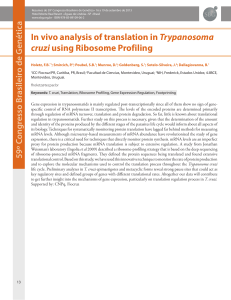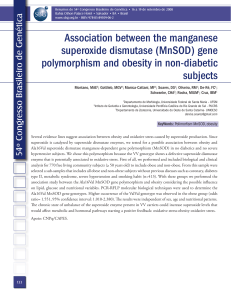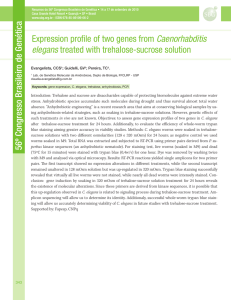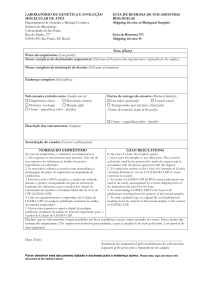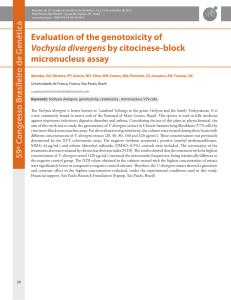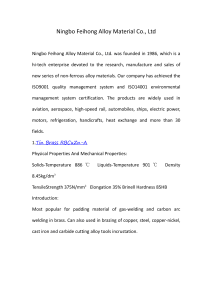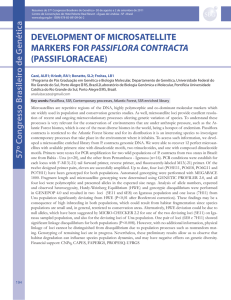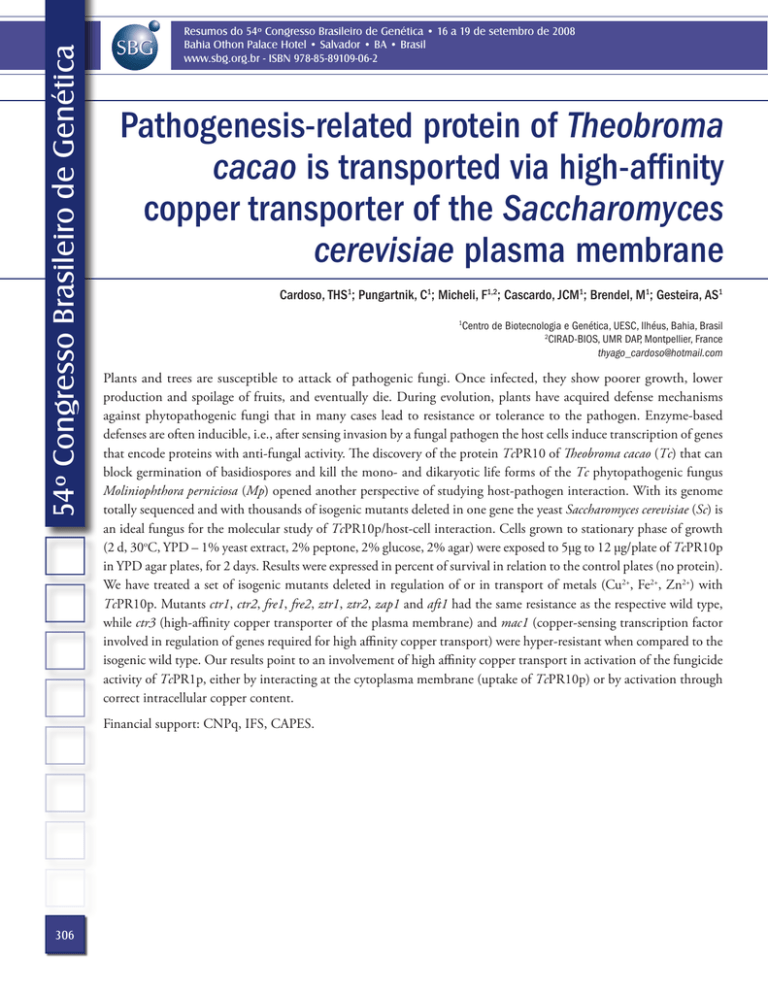
54º Congresso Brasileiro de Genética
Resumos do 54º Congresso Brasileiro de Genética • 16 a 19 de setembro de 2008
Bahia Othon Palace Hotel • Salvador • BA • Brasil
www.sbg.org.br - ISBN 978-85-89109-06-2
Pathogenesis-related protein of Theobroma
cacao is transported via high-affinity
copper transporter of the Saccharomyces
cerevisiae plasma membrane
Cardoso, THS1; Pungartnik, C1; Micheli, F1,2; Cascardo, JCM1; Brendel, M1; Gesteira, AS1
Centro de Biotecnologia e Genética, UESC, Ilhéus, Bahia, Brasil
2
CIRAD-BIOS, UMR DAP, Montpellier, France
[email protected]
1
Plants and trees are susceptible to attack of pathogenic fungi. Once infected, they show poorer growth, lower
production and spoilage of fruits, and eventually die. During evolution, plants have acquired defense mechanisms
against phytopathogenic fungi that in many cases lead to resistance or tolerance to the pathogen. Enzyme-based
defenses are often inducible, i.e., after sensing invasion by a fungal pathogen the host cells induce transcription of genes
that encode proteins with anti-fungal activity. The discovery of the protein TcPR10 of Theobroma cacao (Tc) that can
block germination of basidiospores and kill the mono- and dikaryotic life forms of the Tc phytopathogenic fungus
Moliniophthora perniciosa (Mp) opened another perspective of studying host-pathogen interaction. With its genome
totally sequenced and with thousands of isogenic mutants deleted in one gene the yeast Saccharomyces cerevisiae (Sc) is
an ideal fungus for the molecular study of TcPR10p/host-cell interaction. Cells grown to stationary phase of growth
(2 d, 30oC, YPD – 1% yeast extract, 2% peptone, 2% glucose, 2% agar) were exposed to 5µg to 12 µg/plate of TcPR10p
in YPD agar plates, for 2 days. Results were expressed in percent of survival in relation to the control plates (no protein).
We have treated a set of isogenic mutants deleted in regulation of or in transport of metals (Cu2+, Fe2+, Zn2+) with
TcPR10p. Mutants ctr1, ctr2, fre1, fre2, ztr1, ztr2, zap1 and aft1 had the same resistance as the respective wild type,
while ctr3 (high-affinity copper transporter of the plasma membrane) and mac1 (copper-sensing transcription factor
involved in regulation of genes required for high affinity copper transport) were hyper-resistant when compared to the
isogenic wild type. Our results point to an involvement of high affinity copper transport in activation of the fungicide
activity of TcPR1p, either by interacting at the cytoplasma membrane (uptake of TcPR10p) or by activation through
correct intracellular copper content.
Financial support: CNPq, IFS, CAPES.
306

